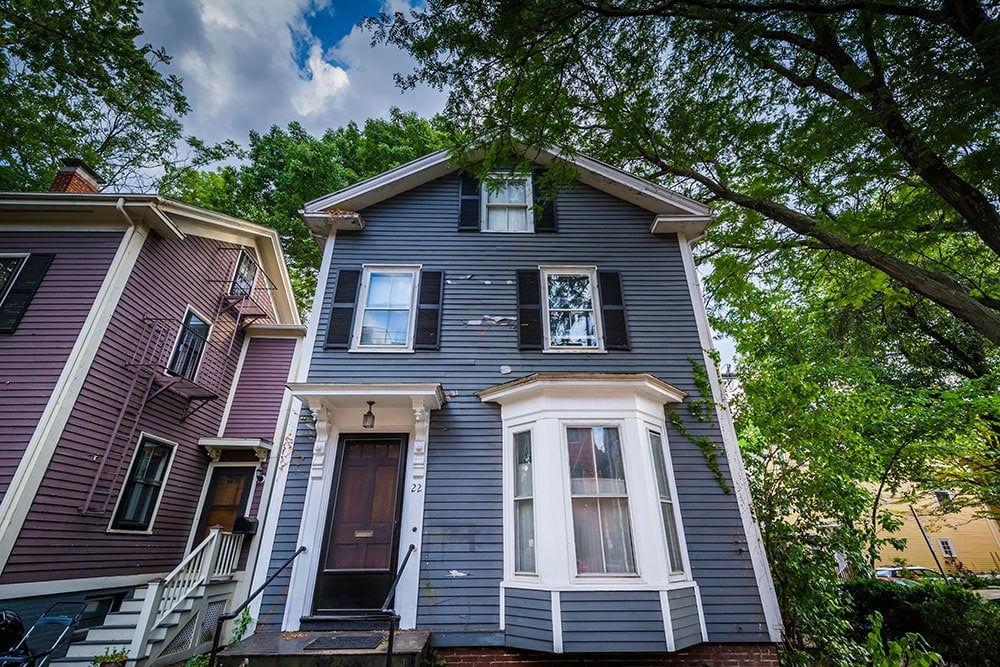Massachusetts has the second oldest median home age of any state in the country. Over half of the homes in the state were built before 1962, about a decade before central AC became popular. Many people, of course, live in homes that are significantly older than that, and they face unique challenges when they decide to add air conditioning.
Thinking about adding AC to your older home? Typically, ductless AC is the best option. Take a look at the advantages. To get help now, contact us at NETR, Inc today.

1. Avoid extensive construction with ductless air conditioning.
Adding ductwork to older homes can be very costly, time-consuming, and disruptive. A lot of old homes have plaster rather than drywall, and you need to be very careful. Cutting through it to add ducts can create cracks and compromise the look of your walls. Additionally, thick ceilings with metal lath and plaster are also not ideal for this type of retrofit.
With ductless AC, you don’t have to worry about disrupting the walls in your home. Instead, the indoor air handling units get attached to a discrete part of the wall. The exact location varies based on your preferences and the unit you select. For instance, the owners of this Tudor in Winchester opted for wall-mounted units in some spaces and floor-mounted units in others.
2. Preserve curb appeal with discrete installation.
If you opt for a ductless AC, work with an installer who has experience with older homes and let them know that you want to preserve your curb appeal. At NETR, we install systems in a way that safeguards the visual elements of your home.
Depending on the project, that may include running line hide down the back or along the corners of your home. Whenever possible, we try to stay near gutters or run piping along soffits coming out of the attic. We also help clients obtain the necessary permits and permission from architectural boards as necessary.
3. Make your older home more efficient with zone cooling.
Whether you live in an older home or are building a new home, a ductless AC lets you split your home into zones. This allows you to maximize comfort, while also ensuring that you don’t waste energy in areas that you’re not using.
For example, in this 100-year-old home in Winchester, the owners put a separate unit in the master bedroom, the baby’s room, the living area, and the home gym. This allowed them to customize the temperatures in each room based on comfort levels and occupant preferences.
4. Consider adding heat.
You can install a ductless AC that exclusively provides cooling, but to improve efficiency all year round, you should consider adding heating. For instance, when the owner decided to add cooling to this multi-family Victorian, he also added heating.
Prior to the installation, the home was using steam gas heat and window ACs. The window ACs were unsightly, noisy, and inefficient. They also left tenants feeling hot and uncomfortable. Ductless AC took care of all of these issues. By adding heat, the property owner was able to reduce the overall heating and cooling costs for the building, without increasing the upfront investment by that much.
Ductless ACs use heat pump technology to cool your home. This process works in reverse when you set the heat pump to warm your home. Because the process is so similar, upgrading from cooling only to cooling plus heating doesn’t add that much to the final cost.
5. Do a proper heat load calculation.
Regardless of the type of AC you select for your older home, you need to ensure that you do a proper heat load calculation. You cannot just take into account the square footage of the home. You have to consider the ceiling height, type of windows, sun exposure, and multiple other factors.
Also, keep in mind that many homes built in the early 1900s didn’t have a lot of insulation. This, of course, needs to be considered when calculating the size of AC that you need. You also have to consider if insulation was ever added to the home.
6. Be prepared to make a financial investment.
Adding ductless heating costs significantly more than putting in a window AC, but it is an investment in your home. It saves you money on heating and cooling bills, and in a lot of cases, it also increases home values. There are rebates and financing options that can help you offset the upfront cost.
7. Consider your power capabilities.
In some cases, you may need to upgrade the electrical system to add ductless AC to an older home. For instance, if your outlets are all 110 volts and you have 60 amp service, you may need to upgrade. It also depends on the size of the system that you select.
At NETR, Inc, we have extensive experience helping people throughout the Boston area install ductless ACs in older homes. We work closely with our clients to develop a system that meets their unique comfort needs. Want to stay cool this summer? Then, contact us to talk about adding AC to your hometoday.

